Home > Tin ware>how Osaka tin ware is handcrafted
These are tin ingots.The tin used for Osaka Suzu-ki is imported
from Malaysia,Thailand, Indonesia and China.
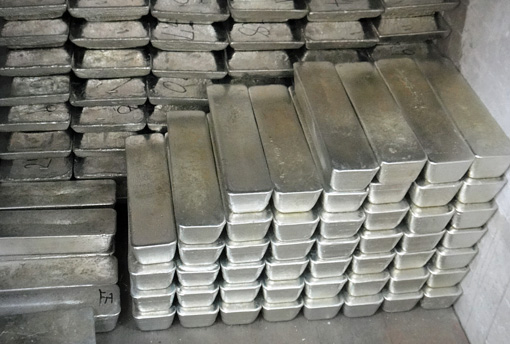
Tin ingots are melted in a cauldron and then poured into molds.
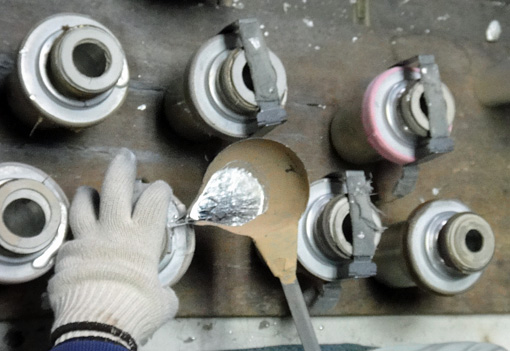
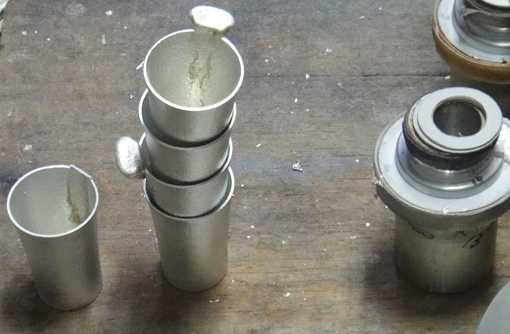
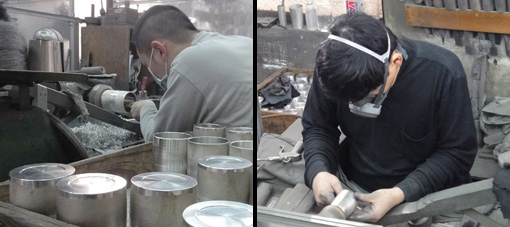
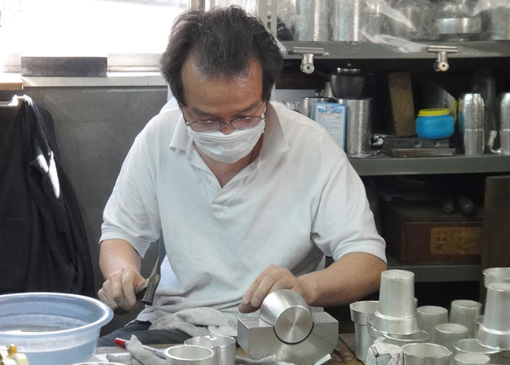
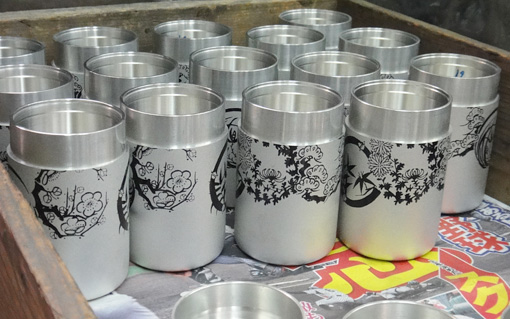
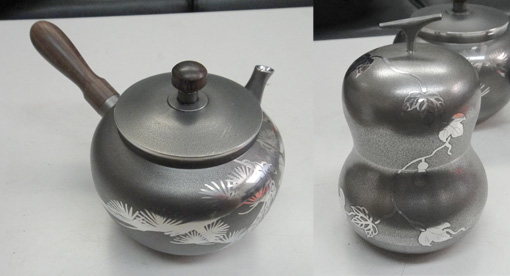
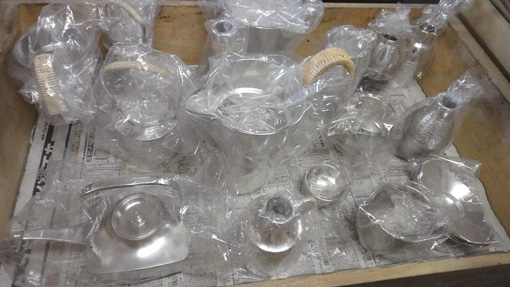
| How Osaka Tin ware is handcrafted. Home > Tin ware>how Osaka tin ware is handcrafted |
These are tin ingots.The tin used for Osaka Suzu-ki is imported |
|
| Molding process Tin melts at around 235-240 degrees celsius. Tin ingots are melted in a cauldron and then poured into molds. |
 |
| Once the tin solidifies, the objects are taken out of the molds and trimmed. |
 |
| Both the inside and outside surfaces are scraped until they become smooth. As a result, the tin regains its original shine. The shape and the thickness of each caddy is minutely adjusted to achieve the perfect fit and bears testament to the craftsmen's expertise.*Some items such as the gourd shape tea caddy which can not be made with a single mold will be attached after this process. |
 |
| Handles, spouts and knobs etc. are added before the decoration process. Here the craftsman is making a sake pitcher spout with a hammer. |
 |
| Decoration These tea caddies are handpainted with enamel or lacquerware. They are then soaked in a nitric acid solution. The painted area is masked but the rest corrodes to achieve a pear-skin pitted effect. The degree of corrosion varies according to the season, so this is a delicate process. The caddies are then washed with water. The painted area stands out in shiny relief and the background is rubbed with black or red natural lacquer. (This is a characteristic process but there are also other decoration techniques). |
 |
| The finished product (image). |
 |
| The purity of the tin for items made by Osaka Suzuki Co. is over 97% and is mainly used for teaware and sake ware. Pictured below are samples of sake ware. |
 |
| About us | How to order | Contact us (Order) | Artistic Nippon Home |